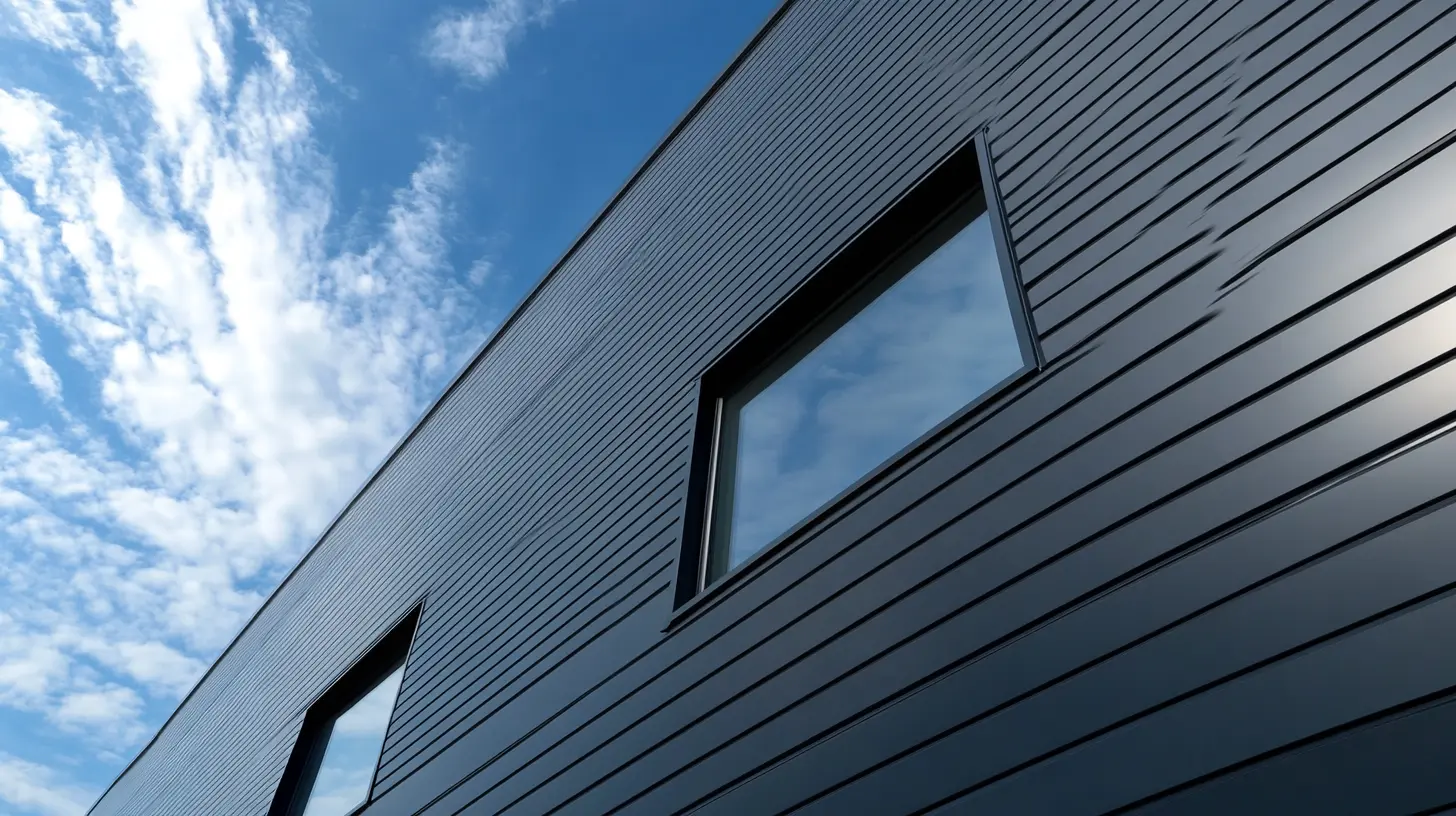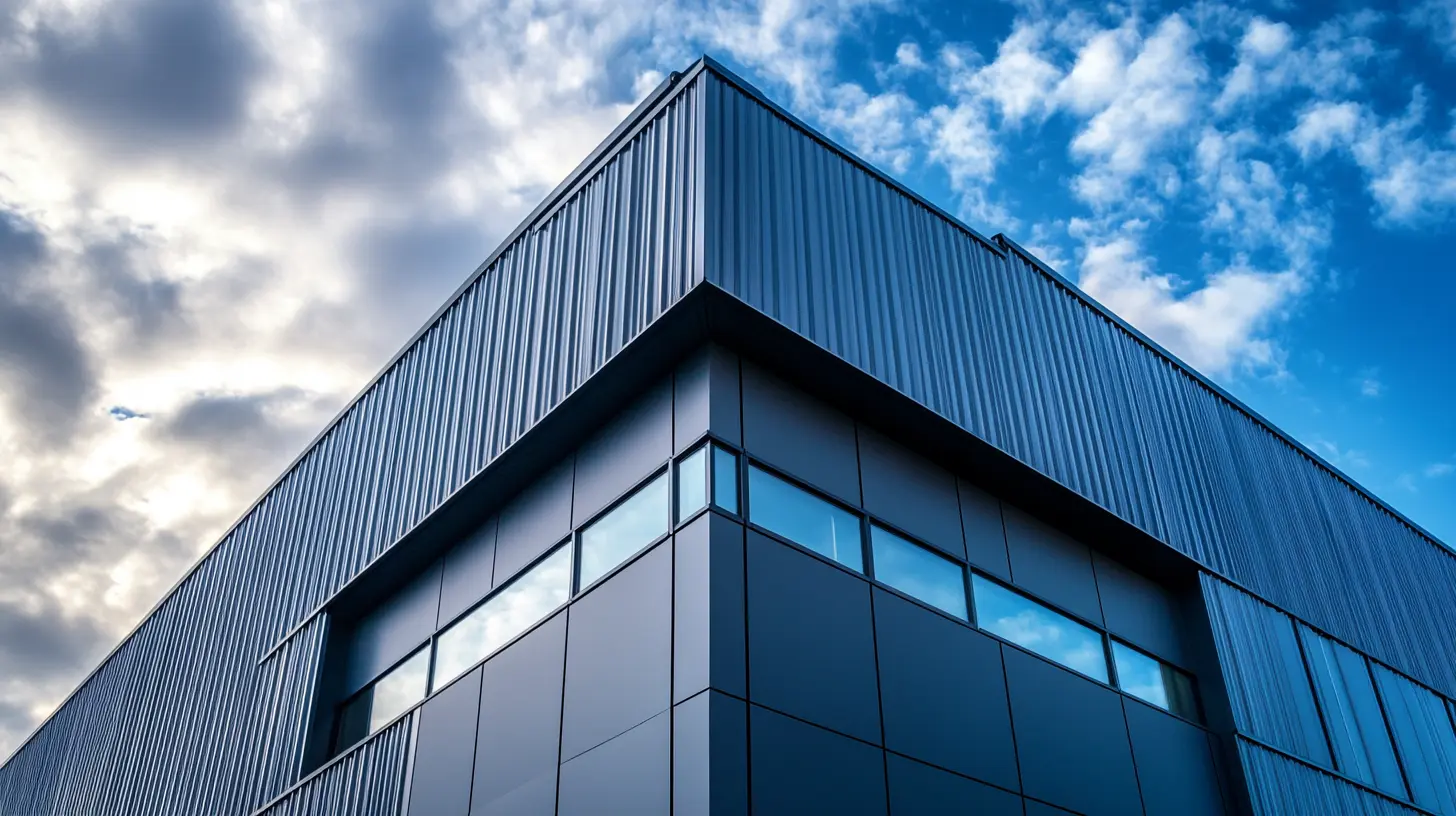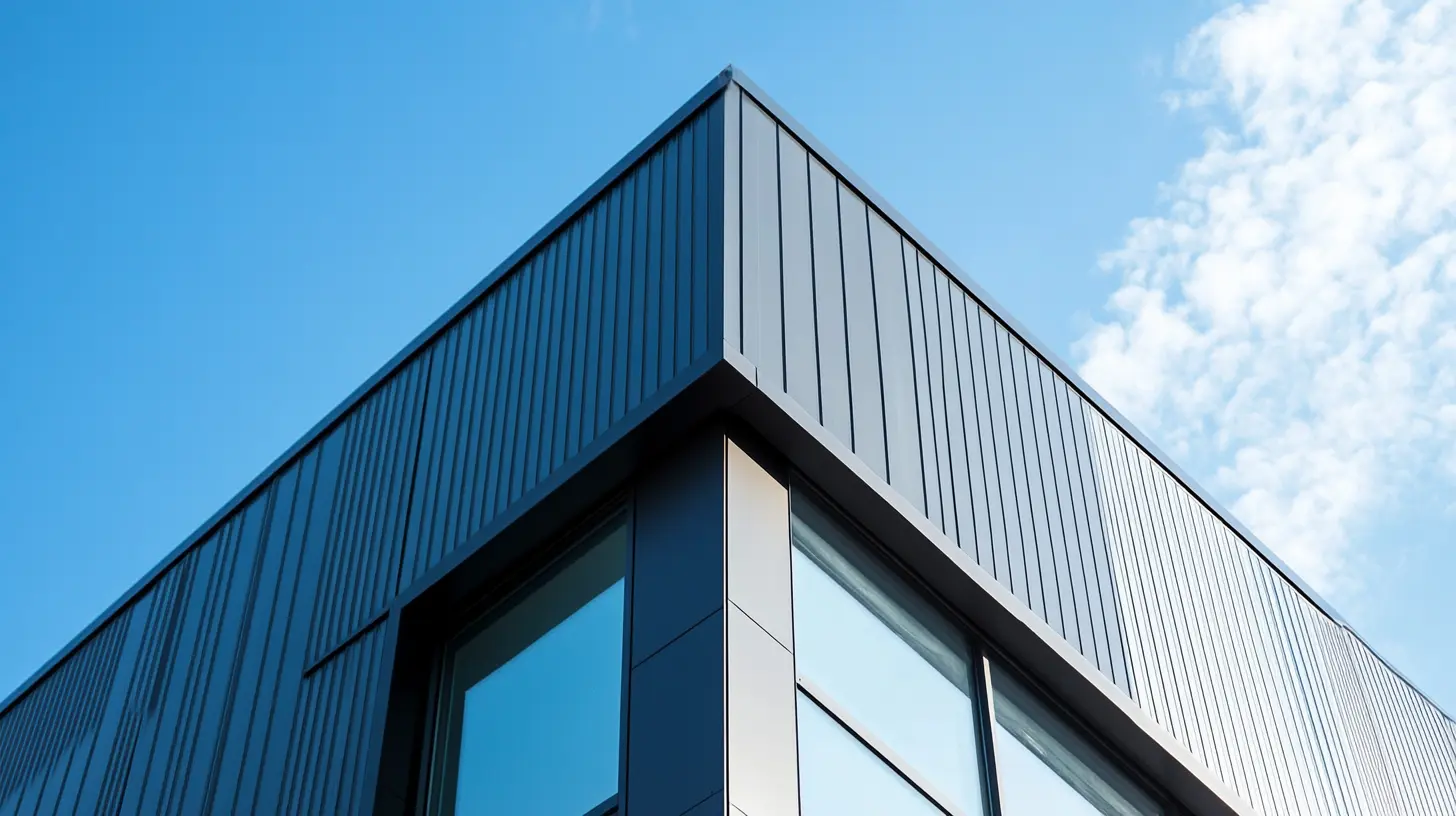Leave Your Message
Using the finest materials should then become the pivotal to existent and aesthetic excellence in the construction and design setting of today. The global plastic cladding market is anticipated to reach $213.57 billion by 2027, as per Grand View Research, growing at a CAGR of 5.5% development. This is in response to the ever-increasing demand for environment-friendly and durable construction materials, with Plastic Cladding Sheets being among the most chosen options by architects and builders. While improving the building's aesthetic appeal, such materials also offer added protection in terms of weather resistance and insulation.
The Shandong Eco Decoration Materials Co., Ltd. company is leading this very innovative process in integrating research, development, design, production, and sales to perform fantastic indoor and outdoor WPC products and many other cladding offerings. Indeed, Shandong Eco Decoration will serve you with high-quality Plastic Cladding Sheets, carrying a lot of experience in foreign trade exports to make it easy for them to deliver these products according to varying customer needs. A big part of tomorrow's architectural future would highly depend on sharing these very advanced and sustainable materials as these with the changing needs of the market.

Plastic cladding sheets are being more often selected for a variety of residential and commercial applications depending on the prevailing trends. Thus, understanding the types and materials available will enable one to make informed choices. Common materials for plastic cladding sheets include UPVC and polycarbonate, which provide an array of advantages like durability, weather resistance, and cost-effectiveness. For example, UPVC cladding requires minimal maintenance, comes with customization options, and is thus very much suited for transforming brickwork façades. The demand for wall cladding has introduced trends, with projections signifying rapid growth in the market and estimated values nearing $168.1 billion by 2032. As building safety advances, alternative materials have emerged, such as fireproof fungi, which indicates a shift in the industry towards eco-friendly solutions. The plastic cladding market is, in particular, breathing and growing with various products and innovations to fulfill safety demands and aesthetic desires of contemporary architecture.

The fast-increasing plastic cladding market is driven by an ever-strengthening need for some of the most versatile and durable building materials. The plastic cladding sheets are emerging as an appropriate choice for aesthetic and functional building applications, as the industries have changed quite a lot. Architects and builders are forcing the materials into modern designs just because of their lightweight and weather-resistant properties.
Apart from using such materials practically, it is also in harmony with modern trends that facilitate sustainable construction and eco-friendly usage. Manufacturers are producing innovative solutions in eco-friendly plastic cladding to attract consumers concerned about the environment. This becomes important in the construction sector with an increasing emphasis on reducing the carbon footprint while ensuring products have quality and aesthetic appeal. With the continuation of market growth, this revolution is expected to push more new entrants and current players to invest in research and development, leading the path for further development in plastic cladding technology.

The unending benefits of high-quality plastic cladding sheets make them a viable option for any construction or design project. Their longer life span is the primary factor in establishing this feature. Unlike conventional materials, these sheets resist, as a rule, harsh weather, ultraviolet rays, and certain chemicals that could otherwise cause noticeable fading. Because of this durability, replacements are minimized, and costs are maximized.
In addition, the sheets are extremely lightweight, facilitating installation and easing the structural load on buildings. They can maintain the appearance of wooden or stone surfaces without the associated maintenance problems. With a very recent trend in construction leaning toward sustainability, choosing high-quality plastics can help achieve ecologically correct practice in light of the recent campaigns toward minimizing plastic usage in many sectors. So, not only do these sheets add aesthetic value to a structure, but they also work toward creating a greener future.

Identify first the reliable suppliers to source high-quality plastic cladding sheets. Visit trade fairs and exhibitions in the industry, then have a conversation with their manufacturers as well as check their products' quality. Networking with professionals in the industry can also provide some insight into the credible suppliers that stand on quality and history.
Again, online industry websites may be useful presented since it features supplier directories that allow comparisons of various manufacturers using their certifications and customer reviews. Check sources that have incorporated advanced materials and engineering. One would be those studying lightweight and strong materials which can provide better performance. Increasingly, all industries need to focus on sustainable resource use; thus, considering suppliers who value environmental responsibility in the market will add value to the source.
It is of utmost importance that during the selection of plastic cladding sheets, their features are assessed to determine their durability and practical performance. The thickness and density rating become factors contributing to strength and longevity in exposure to various environments. A thicker sheet ensures better insulation and withstands impact, especially in exterior applications.
Another issue that needs to be considered is surface finishing. Good quality plastic cladding should, therefore, have a very smooth UV-resistant surface finish that prevents fading and discoloration. Extreme sunlight is part of the consideration here, as anything of lesser value will degrade very fast in such an environment. Other attributes may include scratch resistance, adding to aesthetics and reducing maintenance requirements, making them awe-inspiring products for endurance.
Understand that analysing the cost of high-quality plastic cladding solutions is critical in budgeting for such investments. Superior types of plastic cladding can assure longevity and adequate resistance while minimizing maintenance costs. Investigate price variations among different suppliers as well as the impact of quality on the overall budget for the project.
In addition to that, the markets have shown that certain areas where development occurs rapidly are showing demand for durable cladding materials. This upsurge captures one of the chances of acquiring such high-quality plastic-cladding sheets for beauty and innovation. The balance that the consumers can strike is between cost and quality for the best investment in their projects while remaining abreast of what the industry is offering and what it implies for budgets.
In purchasing high-quality plastic cladding sheets, it's worth taking into consideration the environmental sustainability of the material, given the current crisis of plastic pollution. As news reports often tell, damage caused by plastic waste to oceans can reach up to 40% of marine environments, with human activities being responsible for those impacts. Proper disposal and recycling are effective ways of trying to contain these damages; yet this remains an uphill task.Working with environmentally friendly plastic cladding materials would help make such construction methods much more sustainable. There are of course much-more experimental forms being tried in biodegradable plastics, and innovative recycling processes are showing promising results. However, for instance, making waste from another agriculture polyethylene recyclable would help to break the chain of the plastic dependence and further reduce landfill intake; Sustainability-honored cladding for the building contributes not only to nature care but also to the growing demand of consumers for 'greener' products.
Armed by the regulations and certifications applicable to plastic cladding sheet of high quality, the buyers are assured that their products are meeting the requirements of safety, of environment, and of quality. In recent findings, it has been noted that the advent of ocean-recycled plastics in products brought forth an emphasis on sustainable materials which also comply with environmental regulations. Manufacturers should therefore obtain certifications reflecting standard compliance, reassuring the buyers that the materials are not only able to withstand the test of time but also environmentally sustainable.
The regulators emphasize performance features above sustainability when it comes to cladding made out of plastics. These include UV-resistance, impact-resistance, and thermal stability. Subjecting these properties to the relevant criteria for certification gives buyers the means to make decisions based on informed knowledge. By making certified products their priority, companies can bolster their image while satisfying increased consumer demand for environmentally sustainable and high-performance materials in their construction projects.
Transformations are occurring in the manufacture of plastic cladding due to innovative technologies that have improved the quality and performance of the end product. Advances in extrusion technologies coupled with advanced materials, like polypropylene, have made cladding more durable and flexible. Color matching is now made easy by modern manufacturing processes; this renders aesthetic applications that were once hard to achieve.
These days, companies focus their efforts on sustainability and produce greener plastics. Such bases not only provide environmental care but also match the demand for efficient, long, and durable products. Thus, plastic claddings find their application in internal and external constructions as well as in automobiles, making it clear that they are very flexible and cost-effective. The above developments mark a significant leap in producing more refined plastic cladding sheets for different industrial needs.
Integrating plastic cladding into buildings has proven to be practical and innovative in the successful application of projects worldwide. Incorporating solar panels in the cladding systems is the main design for many towers, which improves the aesthetic appearance and also provides sustainable energy sources. By enveloping large surfaces with energy-producing elements, it revolutionizes the design orientation for architects and builders.
Moreover, new technologies create a stampede on high-quality plastic cladding sheets for environmental stress and energy efficiency. Supporting case studies show severe durability and improved energy performance of structures using these materials; hence, they are ready for the needs of modern constructions. Hence, this trend demonstrates the increased inclination towards sustainable building processes where each element matters, including cladding, for overall efficiency and environmental performance.
Plastic cladding sheets are commonly made from materials such as UPVC and polycarbonate, which offer benefits like durability, weather resistance, and cost-effectiveness.
UPVC cladding provides low maintenance, customization options, and is ideal for transforming brickwork façades.
The market for wall cladding, including plastic sheets, is projected to grow significantly, reaching an estimated value of $168.1 billion by 2032.
Sustainability is important due to the ongoing plastic pollution crisis and the need to mitigate impacts on marine environments, where up to 40% are affected by plastic waste.
Innovations include the development of biodegradable plastics and improved recycling processes, including transforming agricultural plastic waste into reusable materials.
Selecting sustainable cladding materials aids in environmental protection and aligns with consumer demand for eco-conscious products.
Fireproof fungi are emerging as a sustainable alternative in the cladding industry, reflecting a shift towards environmentally friendly solutions as building safety becomes more important.
Effective disposal and recycling practices are essential to mitigate plastic pollution, but they remain a daunting challenge due to the scale of the issue.
The increasing importance of building safety is driving the demand for alternative materials, which influences the evolution of the plastic cladding market.
Trends include a growing focus on sustainability, environmental consciousness, and the use of innovative materials that meet safety and aesthetic demands in architecture.

